Entering and working in a confined space to complete essential inspections and works is potentially one of the most high-risk scenarios an individual can face.
The possible dangers include fall risks, injuries to the head and face, entrapment requiring rescue, poisoning and asphyxiation from noxious gasses and vapors, explosion or fire, and even drowning. Oxygen deficiency and oxygen enrichment in confined spaces may not be noticeable, but that does not mean it isn’t dangerous. A lack of oxygen is one of the leading causes of death in confined spaces.
In addition to ensuring workers are equipped with appropriate specialist Personal Protection Equipment (PPE), robust safety protocols and checks must be in place and implemented before any work commences.
This whitepaper considers the different Confined Space Entry (CSE) challenges, highlighting features and characteristics that define best-in-class practices and solutions. It also shines a light on the issues surrounding the specification, procurement, and maintenance of solutions from multiple manufacturers.
Table of Contents


The risks are real
Undertaking essential inspections or works in confined spaces represents a major safety risk. IOSH reported in 2016 that around 15 workers a year in the UK lose their life in confined space accidents. Causes can range from an inability to recognize the confined space and its dangers, to inadequate systems for safe working and ill-conceived rescue attempts. For instance, the US sees 670 confined space deaths a year, with research by the US National Institute for Occupational Safety and Health (NIOSH) revealing that approximately 60 per cent of confined space fatalities came from rescuers trying to assist and extract victims. Fatalities in confined spaces can happen quickly in seemingly innocuous situations. Across Europe, NISG research puts the number of workers in confined spaces at around five million per year; 15,900 of these are injured and 259 die. 66 per cent of these deaths are caused by dangerous atmospheres. Regardless of the country or region, and whether specific
CSE works legislation and/or Directives are in place, the responsibility for identifying risk and taking the appropriate risk-based safety measures is stark and always remains firmly with an employer.

Understanding confined spaces
A confined space is any environment that is not designed for continuous human occupancy. Often confined spaces will form part of an essential structural component within an industrial or mechanical process – for instance, organizations engaged in delivering utility services, energy and/or transportation. Typical operations and activities requiring CSE inspection and maintenance include the provision of water and sewage handling; oil, gas and petrochemical production; shipping (within cargo vessels and dockyards); and mining.
Location and construction may mean a confined space is substantially enclosed, partially open, with limited access for entry and exit. Hazardous substances or conditions inside the space may place a worker at risk of serious injury; for this reason, a written authority to enter and/or a permit of work is often a legal requirement to carry out inspections, ongoing maintenance or repairs.
Preparing for works: are you ready for confined space entry?
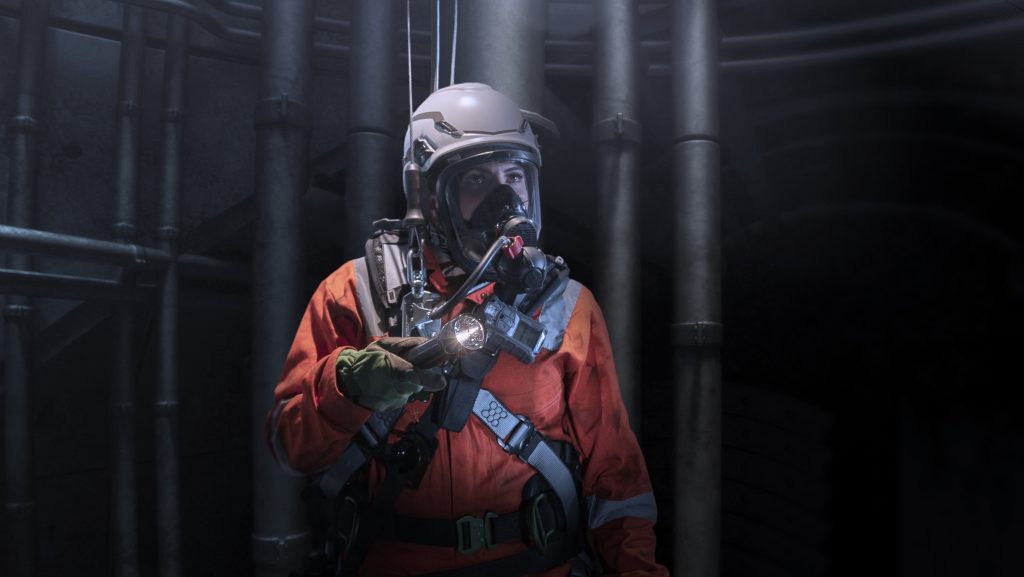
Employers are responsible for ensuring that supervisors and operatives are competent and able to effectively recognize the hazards and unique risks of confined space works.
First and foremost, if at all possible avoid entering the area, especially if a worker is not fully prepared or sufficiently equipped and trained. If entry is unavoidable, for example when crucial maintenance and/or inspection needs to take place, then a comprehensive, safe system of work must be developed. It must then be carried out by supervisors and operatives that are competent and fully able to effectively recognize the hazards and unique risks of confined space works. Key considerations before work commences include:

Suitable ventilation
This must be in place to ensure an adequate supply of fresh air. Depending on the circumstances, it may well be enough to increase the number of openings. In other cases, mechanical ventilation may be required.
The right equipment
Safely entering a confined space can require a whole array of safety equipment, including fall protection (winches, harnesses, self-retracting lanyards), head, eye, face, and hearing (HEFH) protection, and gas, vapor, and respiratory protection. Choosing the most appropriate, highest quality equipment for the specific application is crucial (more on this below), as is ensuring that inspection for this equipment remains up-to-date and all mandatory and recommended manufacturer checks are completed before use.

An appropriate emergency plan
It’s vital that an emergency plan is in place before any work starts. This includes an entry and exit plan for rescuers and a competent, fully-trained operator above ground. If unprepared, it’s likely that the rescuers will be exposed to the same hazards as the operatives requiring rescue.

Competent persons
The team conducting the work must be fully conversant with confined space procedures. As ‘competent persons’ they must have undertaken specialist safety and equipment training and regular refresher exercises.
Risks and equipment: Fall Protection
Planning safe access into, and exit from, confined spaces is essential: the need to enter a vertical shaft or drop into a void raises the risk of a fall. Duty holders must understand what equipment is required to safely access a specific confined space. This includes the right access equipment and a thorough hazard assessment for access; a plan for an emergency extraction, including a fully trained operator above ground; and appropriate personal protection equipment to safeguard the worker from both seen and unseen hazards.
In this section, we’ll take you through the key considerations for choosing and using fall protection systems and PPE, including anchorage (e.g., a tripod), full-body harness, and connecting devices (e.g., retractable lifeline, winch/rescue unit).
Fall arrest devices:
the key considerations
A vertical confined space entry requires the use of a fall arrest device to protect the worker in the event of a fall. Typically, self-retracting lanyards (SRLs) are used for this task. A lanyard that automatically extends and retracts as the operative climbs or descends, remaining under tension, are now available with maximum line extensions of up to 30 meters. In the event of a fall, the line automatically brakes whilst absorbing arrest forces. SRLs with rescuing capability for CSE, known as ‘rescuers’, are popular. These devices not only act as fall arrest devices but also allow rescue operations by the use of a clutch and a handle that turns the SRL into a winch. With a rescuer in place, an external winch is not required for rescue.
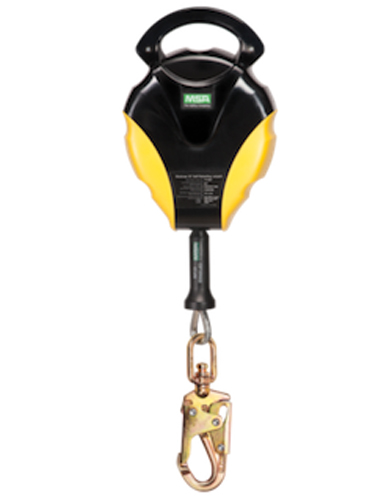
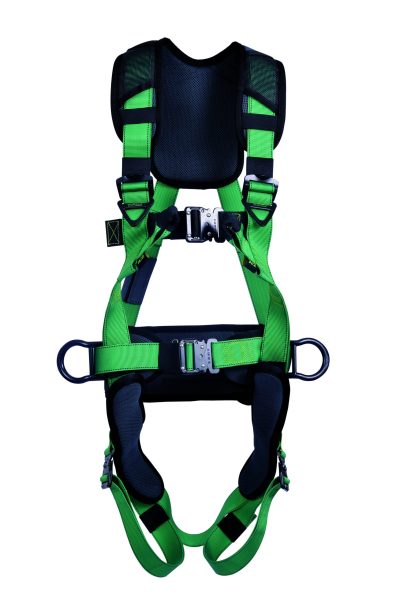
Harnesses: the key considerations
A worker’s safety harness is one of the most important items of PPE when working in confined spaces. Harnesses for use with retrieval equipment should be approved to EN 361. A high quality harness should fit any worker, regardless of shape or size, securely, so easy adjustment is important. Crucially, a harness must:
- Be comfortable to wear for long periods
- Not be bulky, chafe and/or compromise-free movement
- Minimise the possibility of workers overheating in confined environments
- Include a combination of shoulder, back, or chest D-rings/loop attachment points to increase application flexibility
In the event of a confined space rescue with limited access clearance, attaching a spreader bar to the harness (conforming to EN 1497) allows rescuers and casualties to be safely lowered and raised in a fully upright position.
Tripods: the key considerations
A workman tripod is a mobile anchorage point type B certified according to EN795. It must be strong, secure and easily portable. Other desirable design features also include:
- Lightweight aluminum construction
- Legs that automatically lock in the open position
- A clear indication of the maximum safe telescopic leg extension
- Easy-to-use, direct pulley attachment
The tripod provides a secure anchor to fall arrest devices and winches. If access is via a ladder, a fall arrest device with a rescue provision may suffice. However, if access requires the operative to descend while suspended in a harness via a raise and lower device, a fall arrest device and rescue winch are required.
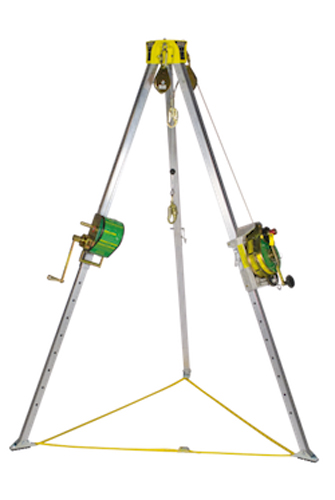
Risks and equipment: Head, eye, face and hearing protection (HEFH)
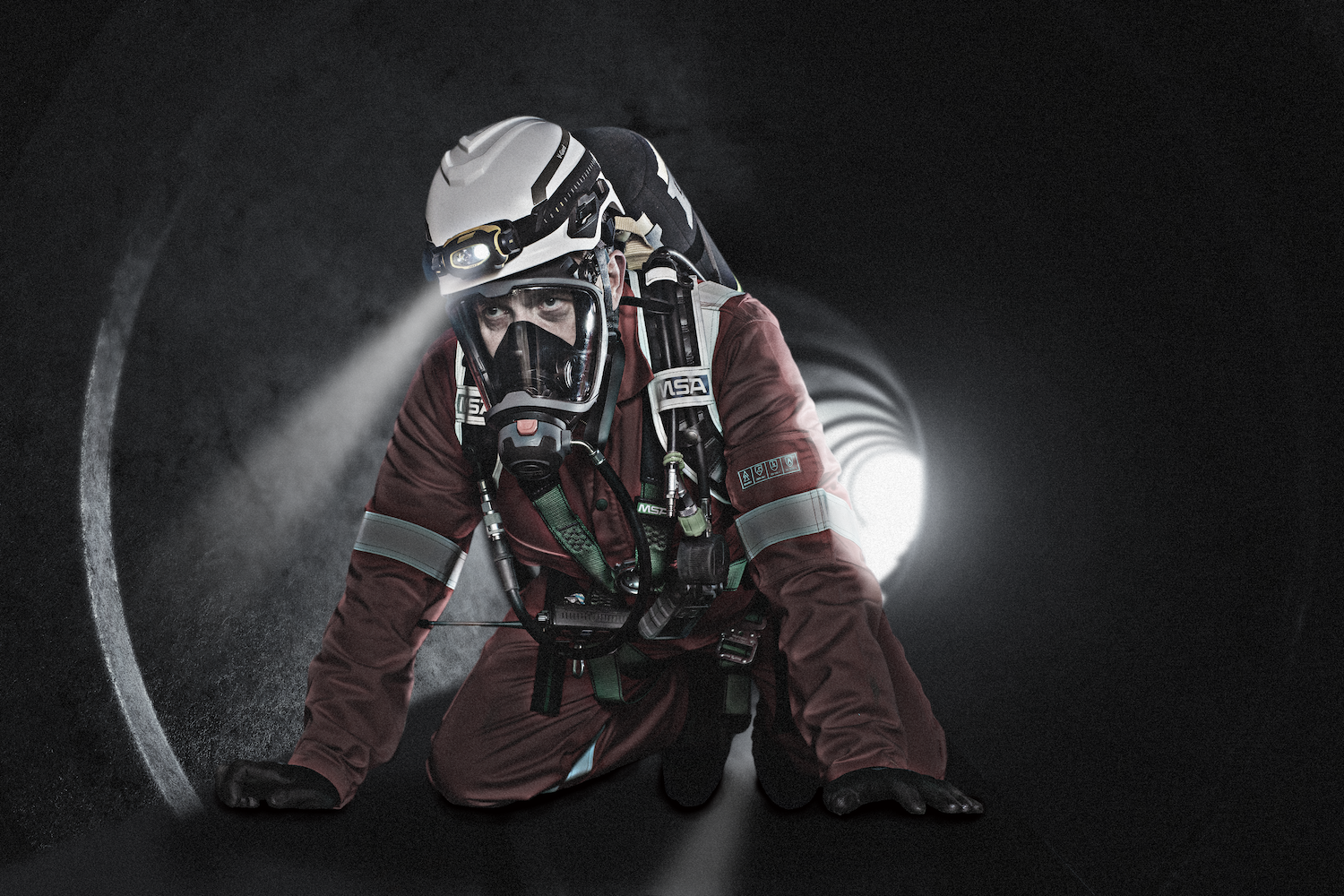
HEFH PPE is central to protecting workers carrying out work in confined spaces. Numerous risks exist depending on the confined space environment, configuration and tasks carried out by the worker. These include falling objects, projection of particles and/or high noise levels.
Safety helmet selection should therefore be carefully selected. Chinstraps are also recommended and, in some circumstances, like working at height, mandatory.
When additional PPE needs to be attached or used in conjunction with the helmet, such as helmet-mounted ear defenders, full face visor, eye protection, or full-face respirators, the complete package should remain compatible and fully compliant. It should also be sufficiently compact as confined spaces are very often restrained spaces.
As with harnesses, comfort, easy fitting, and ease of use remain critical to allowing workers to stay focused on the task at hand, rather than their PPE.
More injuries occur in confined spaces due to atmospheric conditions than any other issue. Multiple studies have shown this can account for up to 56% of reported injuries.
Atmospheric testing and monitoring form a part of safe working procedures for all confined spaces. Duty holders need to determine if the atmosphere inside is deficient or hazardous, and, if so, whether suitable breathing apparatus will allow safe access.
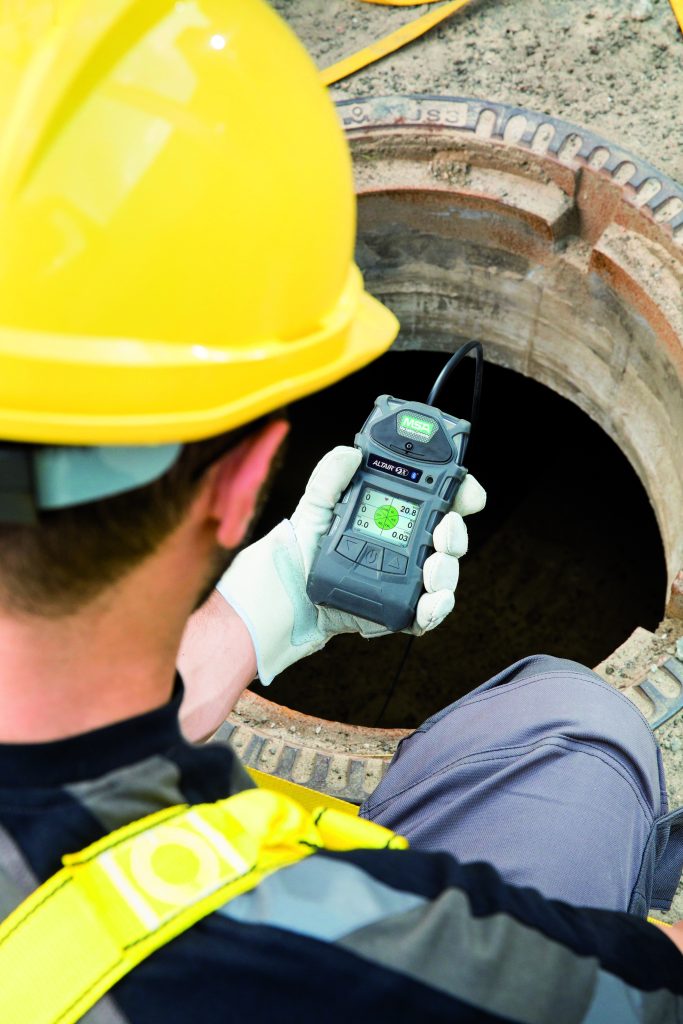

Risks and equipment: gas and vapour detection; respiratory protection
Detecting gas and vapour: the key considerations
Entering a space where oxygen is depleted risks asphyxiation; toxic gases or vapors can result in poisoning, whilst combustible gases or vapors run the risk of explosion or fire. Whilst lowering a suitable detection probe into the space before entry can test oxygen levels and reveal the presence of noxious gases such as hydrogen sulfide, carbon monoxide or vapors, it is vital to remember that readings only relate to the areas where the sampling is taking place. Gas and vapor samples must be taken at different levels. Test samples should be drawn at the top, middle and bottom of confined spaces to pinpoint varying concentrations of gases or vapors. And remember: while testing prior to entry is fundamental, constant and continuous monitoring while inside the confined space is also critical.
Diffusion-type instruments are available for simultaneously measuring combustible gas LEL, oxygen and toxic levels in parts per million (ppm) of H2S, CO and other toxic gases. We have Diffusion devices for personal protection and sampling devices for remote sampling. Portable gas detectors provide an essential way to detect impending atmospheric risk in a confined space. As such, there are some important features that duty holders should look for when selecting quality, reliable equipment.
Gas detectors must be faultlessly accurate, without false alarms. To ensure correct sensor and alarm operation, best safety practice calls for every gas detector to be Bump Tested daily before use and calibrated according to the manufacturer’s specifications. Industry average calibration intervals are every six months. Each device must be taken to the testing station and exposed to a gas concentration that should trigger the alarm. Ensure that a dedicated checkmark is displayed to confirm that the instrument has been tested and can sense gases. Connecting calibration test stands and detectors to the Cloud can also help keep a fleet of gas detectors compliant. For example, software-as-a-service like the Safety io’s Grid Fleet Manager can help teams responsible for safety to ensure detectors are compliant and ready for action.
The ability to detect and display the changing atmospheric status as quickly as possible is essential. Organizations should look beyond the ‘industry average’ or standard compliance performance wherever possible. They should scrutinize and compare written performance specifications for the latest ranges available and select the fastest, most capable devices on the market. For example, one of the current market-leading products can measure up to six gases simultaneously and offers an integrated PID sensor for VOC detection. Advanced sensor technology achieves faster response time, better stability, and accuracy. This contributes to improved safety and a longer service life meaning cost savings over the life of the instrument. In addition to basic visual, audible, and vibration alarms, some detectors are now equipped with a motion sensor that automatically activates when a worker becomes incapacitated and ceases to move.
Innovative manufacturers are also now supplying Bluetooth-enabled portable gas detection devices. Connecting wirelessly to a worker’s mobile phone, they transmit real-time data about the user’s location, gas readings and/or other hazards via cloud-based software-as-a-service like the Safety io´s Grid Live Monitor to duty holders, increasing worker safety and allowing safety managers to take action quickly when seconds count.

Respiratory equipment: the key considerations
Confined space entry often involves work inside storage containers. When storage spaces are emptied, materials absorbed in the walls can leach out, significantly changing the atmosphere. Spills or accidental leaks of such substances as ammonia, acetylene, acids or even water can also create confined space hazards, creating vapors or reactions.
Oxidation such as rusting of metals, decomposition, and fermentation of organic materials can deplete oxygen levels below permissible limits.
In confined space areas with a constantly high potential for hazardous emissions, supplied airline respirators operated by an airline trolley system provide robust safety. In combination with an airline system or simply as a self-rescue device, a short-duration breathing apparatus is also recommended for working in applications with short distances.

For advanced maintenance tasks, where distances are greater and time in the confined space is extended and for rescue applications, Self-Contained Breathing Apparatus (SBCA) provides the independent air supply and unrestricted mobility required. Some of the best in-class SBCA equipment for confined space use has derived from manufacturers working on solutions for firefighters. Cutting-edge features to look for include a compact and lightweight design, and real-time wireless monitoring of the user with smart data gathering.
Multiple supplier solutions vs. specialist safety brand partner
Organizations may be conflicted when faced with critical procurement decisions for Confined Space Entry safety PPE. Historically, many will have chosen point solutions from several different manufacturers. In each case, decisions may have been relatively arbitrary, often with limited time, expertise and resource available to consider the real safety issues and the most suitable solutions.
Taking an ad hoc procurement approach runs several risks. These include:
- Failing to accurately identify risks at the outset
- Failing to appreciate the different types of products, the certifications required, and which are most appropriate
- Overlooking lifetime inspection, maintenance, and servicing costs
- Not factoring in-service lifetimes
- Assuming installation, inspection, commissioning and documentation are professionally executed
- Ensuring regular equipment inspections and ongoing user training are in place
Increasingly, as the health and safety of employees come under even more scrutiny and regulation, organisations are realising the dangers of ill-advised cost-cutting and short-sighted decision-making. Instead, enlightened buyers are turning to long-term procurement partnerships with globally recognized safety equipment specialists. The ability to comprehensively audit CSE needs on a per-site basis, and procure versatile, appropriate solutions with a proven pedigree, can help to mitigate risk and minimise incidents, as well as contribute to a reduction in potentially damaging compliance oversights.
Carefully developed and tested products can be selected from acclaimed ranges in the knowledge that they are suitable, industry-proven and will provide the performance and lifetime cost-to-value required. Crucially, duty holders can call on the best advice and consultancy available for any aspect of safety, confident that installation is professionally managed and scrutinized, with the necessary checks, inspections and training arranged and scheduled.
In summary
Confined Space Entry works pose some of the most wide-ranging and challenging safety concerns for those planning and managing operations. Constant and vigilant monitoring above ground and communication with operatives during confined space works can help to reduce dangers and risks. Alongside meticulous preparations, a careful assessment of risks, documented checks, and pre-agreed rescue plans, the choice, performance, and usability of safety equipment are paramount. Collaborating with a trusted safety equipment specialist partner confers invaluable insight and advice across myriad application scenarios. It also guarantees access to the very latest design and innovation, such as wearable digital technologies capable of transforming the visibility of workers and the conditions within a confined space environment.
